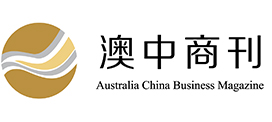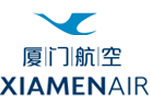This article was written by David Olsson and Andrew Fei.
New rules and policy statements by China’s regulators provide a catalyst for the further opening up of China’s financial markets and financial services sector to foreign investment, leading to increased competition, more innovation and better quality of service.
This article provides an overview of these developments and highlights some implications for foreign investors.
Overall, these developments represent a continuation of the trend of gradual opening up of China’s economy. They present significant business opportunities for foreign investors that wish to access China’s massive (and rapidly growing) capital markets and those that wish to enter or expand their presence in China’s financial services sector, which serves a growing list of multinational companies and a burgeoning, educated and tech-savvy middle class.
Background
For China, 2018 is a milestone year because it marks the 40th anniversary of reform and opening up in China (改革开放), and the beginning of the implementation of the decisions made at China’s 19th National Congress.
On 10 April 2018, Chinese President Xi Jinping announced a “new phase of opening up” of China’s economy at the 2018 Boao Forum for Asia. The speech referred to further opening up of China’s financial system and making China more attractive for foreign investments. The following day, Yi Gang, Governor of the People’s Bank of China (PBOC) – China’s central bank – also delivered a speech at the Boao Forum where he outlined the implementation measures and timeline in greater detail.
In the lead up to, and shortly following, the high-level remarks at the Boao Forum, Chinese regulators have issued a series of implementing rules and policy statements. These new measures can be broadly categorised as those relating to China’s financial markets and those relating to investments in China’s financial services sector (banking, securities, futures, insurance, payments etc.). Recent key developments in each category are discussed in turn.
Attracting foreign investment into China’s financial markets
Easing restrictions for QFIIs and RQFIIs:
On 12 June 2018, PBOC and China’s foreign exchange regulator – State Administration of Foreign Exchange (SAFE) – issued new rules that further ease restrictions on foreign institutional investors’ access to China’s financial markets. The new rules apply to Qualified Foreign Institutional Investors (QFIIs) and RMB Qualified Foreign Institutional Investors (RQFIIs).
By way of background, the QFII scheme enables certain types of foreign institutional investors to use their offshore foreign currency for investment in China’s financial markets, while the RQFII scheme is a modified version of the QFII scheme that facilitates the use of RMB held outside mainland China for investment in the China’s financial markets. The investment restrictions in the QFII and RQFII schemes have been gradually relaxed since their launch in 2002 and 2011 respectively. As of May 2018, China granted quotas totalling USD 99.4 billion to 287 foreign investors under the QFII scheme, and quotas totalling RMB 615.8 billion to 196 foreign investors under the RQFII scheme.
Effective from 12 June 2018, the new rules:
- removed the 20% limit (expressed as a percentage of a QFII’s total investment in Chinese securities) on the net amount of capital and profit that a QFII can repatriate out of China each month. We note that SAFE reserves the right to implement macro-prudential supervision with respect to QFII repatriations in light of China’s national economic and financial situation, the supply and demand in the FX market and status of international balance-of-payments;
- removed the lock-up period for QFIIs and RQFIIs – previously, no repatriation may be made during the lock-up period (which generally varied in length depending on whether the investor was an open-ended fund); and
- permit QFIIs and RQFIIs to hedge (through qualifying onshore hedge providers and market participants) the FX risks associated with their investments in Chinese securities, provided the hedge is reasonably correlated to their actual FX risk exposure.
The new rules should help address foreign investors’ concerns about repatriating funds associated with their securities investments out of China, and thereby make China’s capital markets more attractive to foreign investment.
Stock Connects and Bond Connect:
In addition to theQFII and RQFII schemes, the Shanghai-Hong Kong Stock Connect (沪港通) and Shenzhen-Hong Kong Stock Connect (深港通) (each a Stock Connect) as well as the Bond Connect between Mainland China and Hong Kong (债券通) provide important avenues for foreign investors to access China’s capital markets.
Starting May 2018, the “northbound” (i.e. Hong Kong to China) daily trading quotas for each Stock Connect were quadrupled from RMB 13 billion to RMB 52 billion – a step taken in anticipation of the expected capital in-flows arising from the inclusion of China A-shares in MSCI’s global indices (discussed further below).
In his speech at the Boao Forum, PBOC Governor Yi Gang said that China will endeavour to establish the Shanghai-London Stock Connect (沪伦通) by the end of 2018. The Shanghai-London Stock Connect (likely based on issuing and trading of global depository receipts) is expected to give UK and Chinese investors greater access to each other’s share markets, and enable China’s financial markets to be further integrated with the rest of the world.
In terms of bonds, China’s USD11 trillion bond market is already the third largest in the world. The amount of Chinese bonds held by foreign investors has recorded month-on-month growth for the past consecutive 15 months, according to data published by China Central Depository & Clearing Co., Ltd. (CCDC). The launch of Bond Connect in July 2017 has contributed to this growth.
While the proportion of Chinese bonds held by foreign investors (around 2%) remains relatively low compared to some other major bond markets, this proportion is expected to continue to rise if China further opens up its financial markets, and Chinese bond yields remain attractive to foreign investors.
Inclusion of Chinese shares and bonds in major global indices:
Besides the QFII and RQFII reforms outlined above, June 2018 marks a significant milestone for Chinese financial markets for another reason: on 1 June 2018, China A-shares were officially included in MSCI’s global indices. A few weeks later, on 14 June, Vice Chairman Fang Xinghai of the China Securities Regulatory Commission (CSRC) stated that the CSRC is already working on new measures and regulations designed to help increase the “inclusion factor” (a metric used to in calculating MSCI indices) for A-shares from 5% to 15%. As China continues with its market reforms, and as Chinese companies continue their extraordinary growth stories, Chinese shares are expected to account for a greater portion of MSCI and other global indices.
In terms of the bond market, in March of this year, Bloomberg announced its decision to add Chinese government and policy bank bonds to one of three major global bond indices: the Bloomberg Barclays Global Aggregate Index. Bloomberg’s announcement specifically recognised “China’s continued efforts over recent years to enhance access to the world’s third-largest bond market”. At the end of the phase-in period for their inclusion, RMB-denominated Chinese bonds will be the index’s fourth largest currency component following the US dollar, euro and Japanese yen.
Attracting foreign investment into China’s financial services sector
New regulatory regime announced
In recent years, the three separate bodies that have overseen banking, insurance and securities – the China Banking Regulatory Commission (CBRC), the China Insurance Regulatory Commission (CIRC) and the China Securities Regulatory Commission (CIRC) – have increasingly overlapped as the markets have become more sophisticated. Partly in response to a desire by both local and foreign investors for more clarity, in April 2018, CBRC and CIRC merged to become the China Banking and Insurance Regulatory Commission (CBIRC). The CSRC will remain separate, retaining most of its previous brief.
Meanwhile the PBOC’s role will change significantly. It is now responsible not only for monetary policy and overall regulation of the financial sector, but also policy making, with CBIRC and CSRC more directly focussed on implementation and regulatory oversight.
The implications for business are overwhelmingly positive. We are more likely to see more coordinated policy making and regulation, as China seeks to rein in irresponsible lending and excess leverage, increase transparency and corporate governance, and seek broader alignment with (and to play a greater role in shaping) global regulatory developments.
Further developments
Following the Boao Forum, the CBIRC and CSRC announced a number of measures designed to attract foreign investments in China’s financial services sector. The new policies are underpinned by the following three key principles:
- China’s financial sector will be open to foreign investors, whatever their types of ownership, as long as they can bring about better financial services. While differentiated regulation might remain in some sub-sectors, the overall strategy is to give equal treatment to domestic and foreign investors.
- The pace of opening-up will proceed in tandem with the reforms in China’s exchange rate mechanism and the further opening of its capital account.
- The management and prevention of financial risk (which includes insistence on strict compliance with all applicable laws, regulations and policies) during the reform process remains paramount.
The specific financial sector measures that have been announced include:
Banking:
The CBIRC stated in April 2018 that:
- it will remove individual and aggregate ownership limits on foreign investors’ shareholdings in Chinese commercial banks and financial asset management companies and that Chinese domestic investors and foreign investors will be treated equally when it comes to investments in these types of Chinese entities;
- it will further expand the business scope of foreign banks in China (including with respect to RMB-related services and allowing branches of foreign banks to accept relatively smaller term deposits) and allow them to set up branches and subsidiaries at the same time in China; and
- foreign banks are now permitted to underwrite and sell Chinese government bonds without prior government approval (although a filing should be made to the CBIRC within 5 days of commencing such business).
Insurance:
The CBIRC stated in April 2018 that:
- it will increase the foreign ownership limit for life insurance companies to 51%, and remove this limit altogether after 3 years (i.e. 100% foreign ownership will be permitted);
- it will allow qualifying foreign investors to engage in insurance brokerage and insurance assessment businesses in China, and eliminate the requirement to maintain a representative office for two years before foreign insurers can formally enter the Chinese market;
- it will remove the requirement that foreign invested insurance companies must have had a representative office for two years before they engage in business in China; and
- it has removed restrictions on foreign-invested insurance brokers so they have the same business scope as Chinese insurance brokers.
Securities, futures and funds:
Chinese regulators have stated that:
- the foreign ownership limit for securities companies, futures companies and fund management companies will be increased to 51%, and this limit will be removed altogether after 3 years (i.e. 100% foreign ownership will be permitted). In April 2018, the CSRC issued implementing rules that ease foreign shareholding limits for both listed and unlisted Chinese securities companies;
- the requirement that a joint venture securities company must have at least one securities company among its domestic shareholders will be removed; and
- restrictions on Chinese-foreign joint venture securities companies will be gradually lifted so that they can have the same business scope as Chinese securities companies. The CSRC issued implementing rules in April 2018.
Asset management and wealth management:
The CBIRC stated in April 2018 that there will be no foreign ownership limits with respect to financial asset investment or wealth management companies that have been newly established by Chinese commercial banks.
Payments and other financial services:
- In March 2018, the PBOC issued rules to open up China’s non-bank payment services sector to foreign investors. These rules are designed to align market-entry and ongoing regulatory compliance requirements for domestic and foreign-invested non-bank payment institutions.
- In April 2018, the CBIRC stated that it will adopt measures to encourage foreign investors to enter China’s trust services, financial leasing, auto finance, money brokerage and consumer finance sectors.
Concluding observations
China’s financial market has now become a real prospect for foreign investment. The recent financial regulatory developments present many new business opportunities for foreign investors and financial institutions. Overtime, they should result in greater foreign participation in China’s financial markets and financial services sector, which can lead to greater competition, more innovation and better quality of service.
While Chinese regulators have taken significant steps to further open up the country’s financial markets and financial sector, ensuring financial stability will continue to be the paramount consideration. Senior Chinese officials have consistently underscored the need to implement financial regulatory reforms while maintaining stability.
Accordingly, we can expect China to continue to adopt a gradual approach to reforming and opening up its financial system and emphasise strict compliance with regulatory requirements in order to prevent systemic risks. The flip-side of national treatment of foreign investors in China is that these investors (and any Chinese financial institutions in which they invest) are expected to strictly adhere to Chinese laws, regulations and policies in the same manner as domestic firms.
We will continue to keep you updated on important Chinese financial regulatory developments through our bilingual Chinese financial reform newsletter and regular in-depth analysis.
http://www.kwm.com/en/au/knowledge/insights/chinas-capital-markets-financial-services-attractive-foreign-investment-20180621















